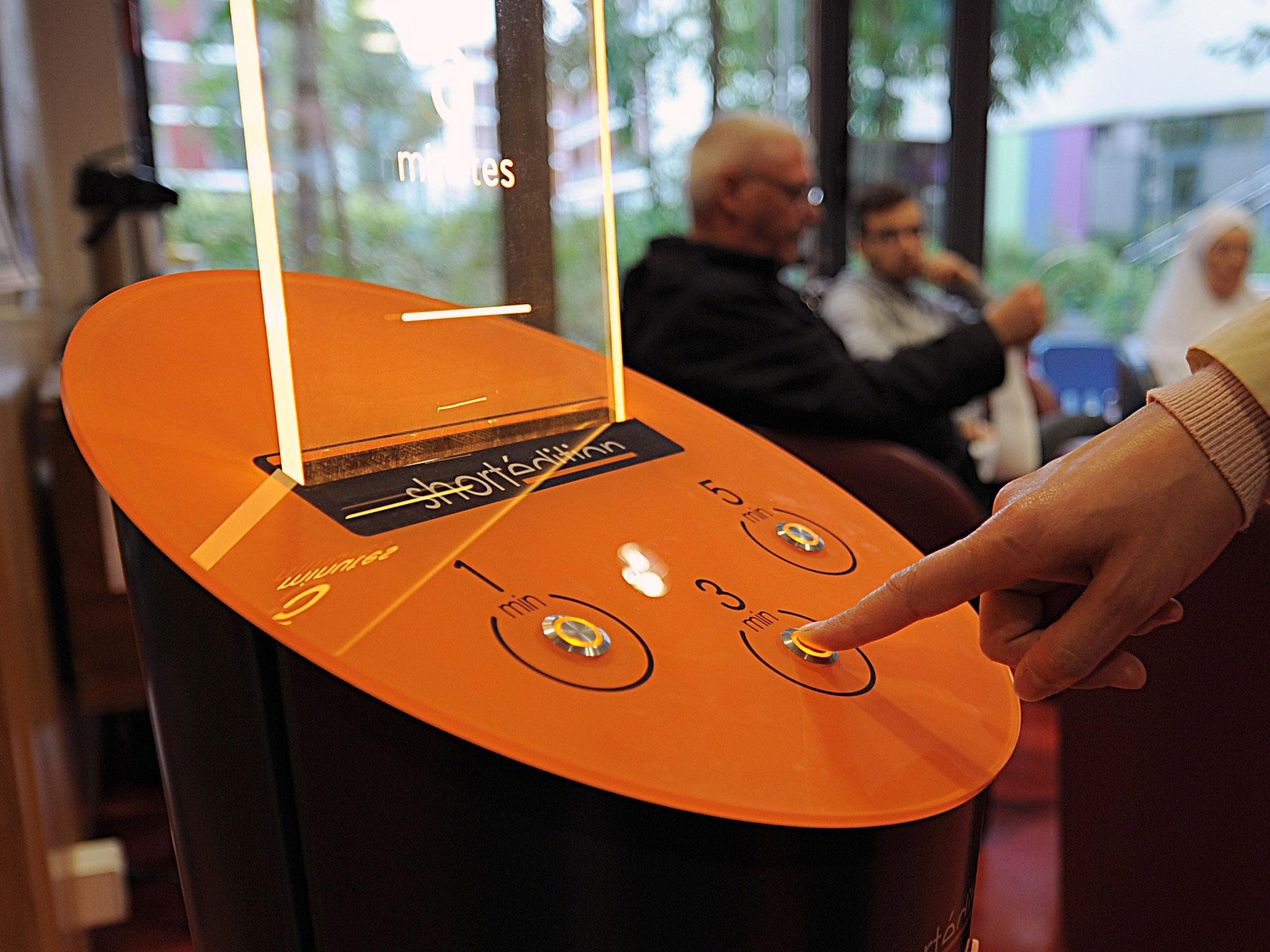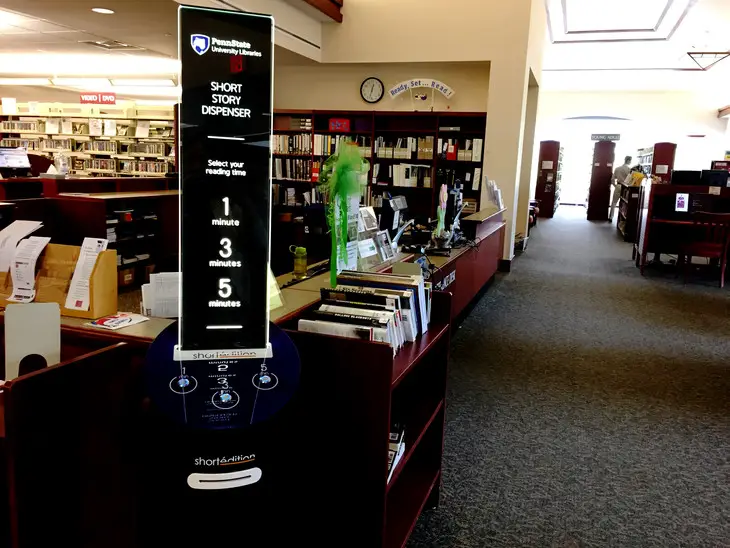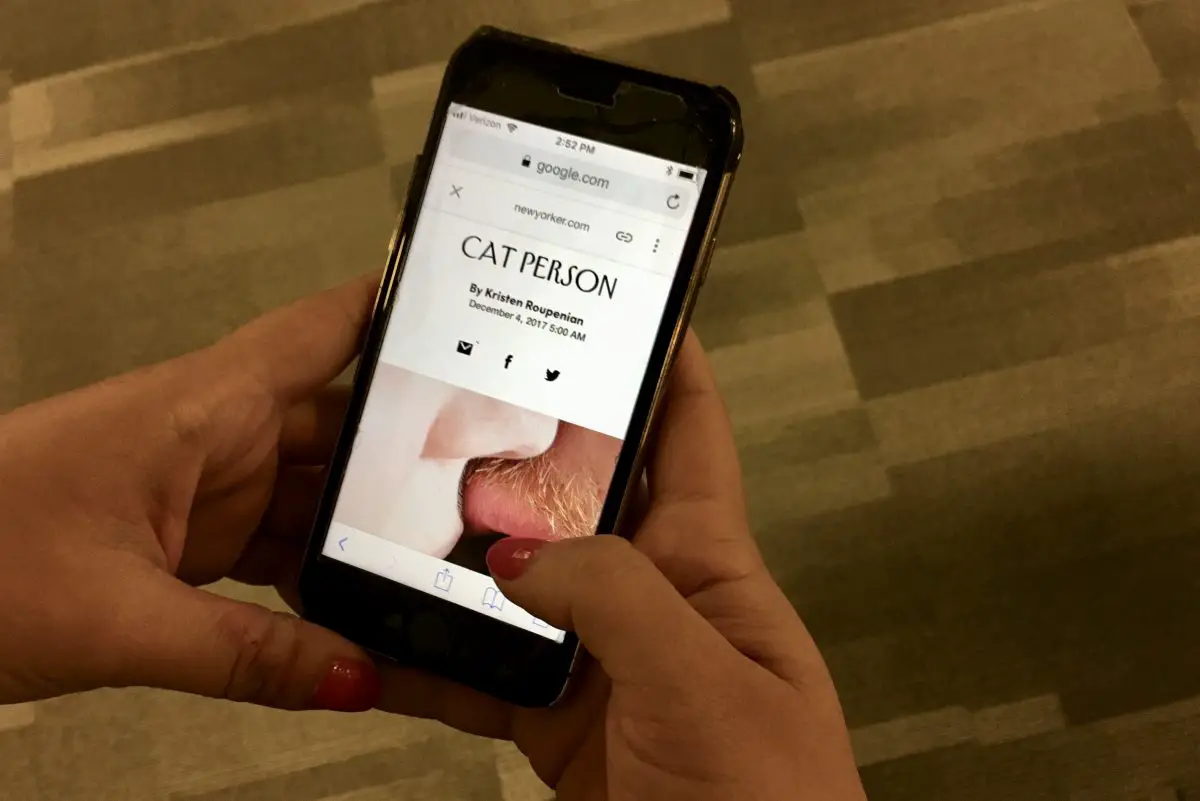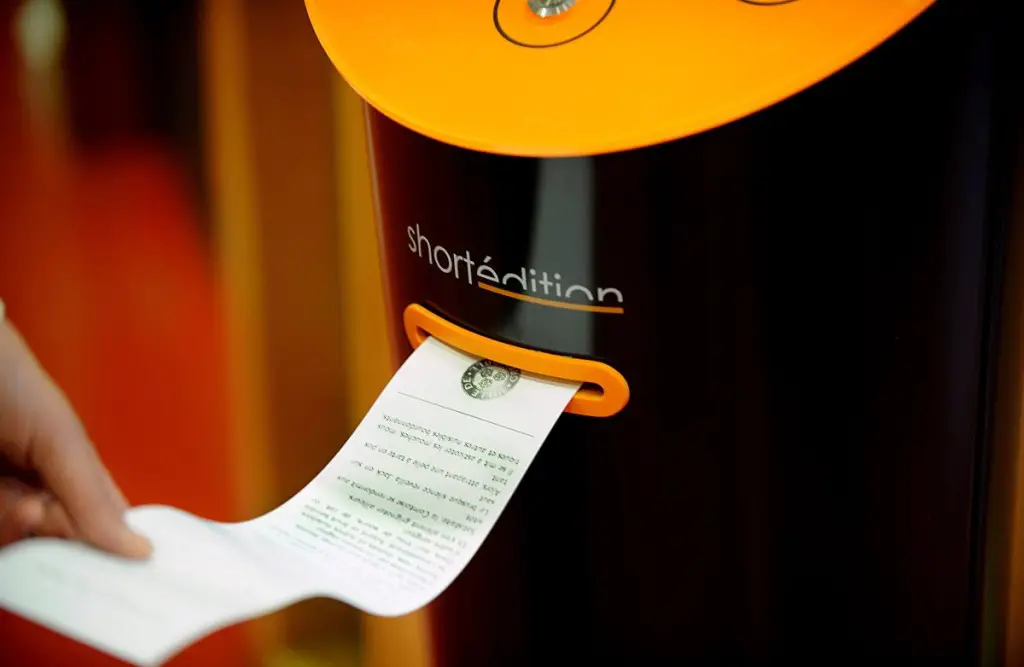Urban legend contends that Ernest Hemingway, while at lunch with fellow writers, agreed to a $10 bet that he could not write a six-word novel. With ease, he jotted down on a napkin these six words: “For sale, Baby Shoes, Never Worn.”
Whether fact or fable, this age-old story has inspired and taught generations of aspiring writers a truly poignant lesson: There lies power in brevity.
Especially in today’s all-too-familiar hustle and bustle, free time for reading seems practically nonexistent. According to the Pew Research Center, 24 percent of Americans have not read a novel in its entirety in the past year.
With countless tasks and various forms of media vying for attention, the dusty old novels containing many hundreds of pages are relegated to the back of the bookshelf.
But on this seemingly disheartening principle, Short Edition, a French “community publisher for short literature,” fashioned charming short story dispensers, perfect for the busy reader on-the-go and a clear sign of the short novel genre’s stunning rebirth.
A 2016 article in The New Yorker described Short Edition’s creation as “a black and orange, rocket-looking cylinder that spits out short stories, free of charge.”
On the machines, users can select a one-minute, three-minute or five-minute story. The first eight dispensers popped up in Grenoble, a city in the French Alps, and within one month of their installation approximately 10,000 stories had been printed.

The stories printed featured works of French writers, attempting to shine a spotlight on talented, aspiring writers with unpublished manuscripts. The dispensers in Grenoble could be found in the “city hall, the tourism office, and in libraries and social centers.”
These hidden gems soon caught fire and expanded. There are now 150 dispensers worldwide.
The New York Times reported that Short Edition installed more than 30 of their machines in U.S. “restaurants and universities, government offices and transportation hubs.” In fact, Short Edition announced that very soon American writers will be able to submit their work for review and to possibly be distributed via the dispensers.
Francis Ford Coppola, famed director of “The Godfather” and other cinematic hits, invested in Short Edition and installed the first U.S. dispenser in his Cafe Zoetrope located in San Francisco.
“I’d like to see the city of San Francisco put them everywhere so that while waiting for a bus, or marriage license, or lunch, you could get an artistic lift, free of charge,” Coppola said. Other dispensers can be found on the Penn State campus, and in cities such as West Palm Beach, Florida, and Philadelphia.
Schools, government facilities and public spaces can invest in these unique kiosks. Each dispenser costs $9,200 to rent, “plus an additional $190 per month for content and software.”

Cities around the world are starting to see the value of these literary vending machines. The Free Library of Philadelphia is looking to expand the kiosks to more places throughout the city, including the Philadelphia International Airport.
“We are interested in finding sites to engage audiences who aren’t necessarily coming to the library,” said Andrew Nurkin, the library’s deputy director of enrichment and civic engagement.
What began as a clever idea confined to one city in France has flourished into an international movement, presenting short stories as a potential panacea for the novel’s unfortunate decline.
The Star Tribune reported that “For the past several years…short-story collections have been on the rise, gaining in significance and momentum, written by big names, published by big houses and scooping up some of the most significant prizes.”
Book lovers may despair that modern American readers no longer have the time, energy or patience to curl up with Tolstoy’s 864-page classic Anna Karenina or even a modest 300-page novel. However, this does not necessarily imply that Americans no longer retain an interest in the written word.
Christophe Sibieude, co-founder and head of Short Edition, said the popularity of the dispensers can very much be attributed to the nature of the times.
“The written word isn’t dead,” Sibieude said. “The paper format provides a break from omnipresent screens. People may not have reacted so strongly to our vending machines six years ago when smartphones hadn’t become essential to all parts of our lives yet.”
Technology undoubtedly enables instant gratification. Inquiries can be answered within the time span of a few simple clicks, and skimming headlines seems more appealing than carefully flipping through the morning newspaper.
In a disturbing 2015 report, Microsoft declared that attention spans of humans had decreased from 12 seconds in 2000 to eight seconds in 2013, which is less than the average attention span of a goldfish.
While the Wall Street Journal and other sources have called into question the accuracy of some of Microsoft’s statistics, the point stands: Technology may enhance efficiency, but reading requires time and focus — luxuries the average reader may no longer be able to afford. Short stories can provide readers with a narrative just as compelling with less ink.
In its Dec. 11, 2017 issue, The New Yorker published a fiction short story entitled “Cat Person,” by Kristen Roupenian. The story went viral and “took over Twitter,” according to The Washington Post, with hosts of readers remarking on its relatability.
“Cat Person” tells the tale of a college girl dating an older man and their journey from their first encounter to bad, unenthusiastic sex to the relationship’s demise. For many, the story touched about rarely discussed nuances of 21st-century dating.

“A New Yorker short story went viral because, for one of the first times, something in the magazine seemed to capture the experience not of print-oriented, older intellectuals but of millennials,” according to The Washington Post.
Its short story format in an online magazine made the content easy for readers to share and discuss on various social media accounts. If Roupenian had captured the same relatable sentiment in a novel, the message may still have gained some traction; however, the story’s accessibility and brevity, as well as its poignant message, made it a hit.
This is the beauty of short stories, which Short Edition so clearly understood. Its core mission remains firm: To distribute these stories that take less than five minutes to read “So that you can read short literature whenever and wherever you like. To overcome those little moments of boredom or enforced waiting in your daily life — at work, on the bus or in the train, in the doctor’s waiting room, or in the peace and quiet of your own home…”
Stories don’t need to fill 300 or more pages to be considered worth sharing. Even in the space of a 280-character tweet, a remarkable story can be told.
The rise of short stories may disappoint traditional bookworms, but it could empower enthusiastic, busy readers. Literature need not be a burden, but a breath of fresh air amid the unceasing commotion of 21st-century life.

















